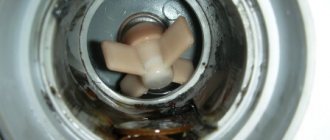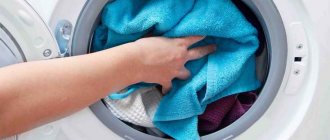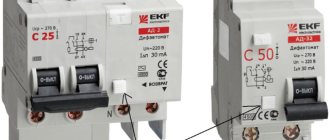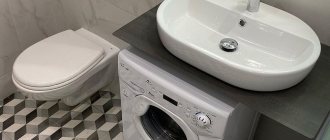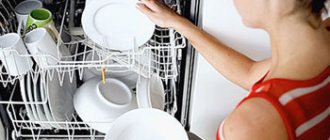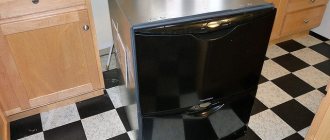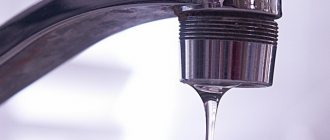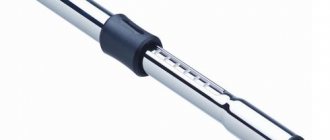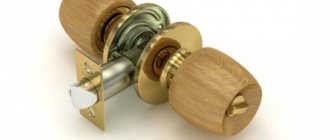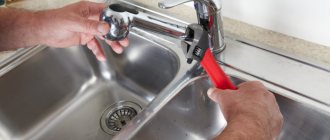4.9 / 5 ( 7 votes)
Agree, it’s unpleasant when the washing machine doesn’t work, but you can’t understand the reason and call a technician. What to do? Calm down and read our article. In it we will tell you why the car broke down and what you can really do on your own.
- Signs of a washing machine breakdown
- How to fix the spin?
- What to do if the drain doesn't work?
- Repairing the motor
- Programs not working in your washing machine?
- How to fix the control panel?
- What to do if the door is broken?
Signs of breakdown
You can start looking for the answer to the question: “How to fix a washing machine with your own hands?” when:
- The car does not respond to the start button. If there is light in the house, most likely there is something wrong with the power supply to the device itself.
- The machine responds to the power button, but it is impossible to set a program or individual function. Again, the first thing to do is diagnose the power supply.
- The machine turns on, I can select a program, but during the wash there is a strange sound - a knocking sound or something else. In such cases, you have to repair the washing machine drum.
- Water does not drain. Then the problem is in the pump.
This is a non-exhaustive list of signs. There may be others that indicate equipment failure. But don’t get upset right away and don’t rush to call the service, as you can handle some problems yourself.
How to halve a drum
Previously, almost all washing machines had a tank consisting of two halves. To disassemble it, you just had to unscrew the bolts connecting the halves. However, production approaches have changed significantly and now manufacturers install non-separable drums in their models, the parts of which are soldered together. But even such a component can be disassembled if some specific manipulations are performed.
How to halve a solid tank:
- The pulley is removed from the tank. If the retaining bolt cannot be unscrewed immediately, it is likely that the manufacturer additionally used reinforcing glue.
- Use a hacksaw to cut the tank into two parts along the weld seam.
- As an additional step, you can drill small holes around the perimeter of the seam. Then, with their help, the halves of the structure will be connected to each other.
- It is easy to remove the drum from the sawn tank. Moreover, convenient access to the oil seal and bearings will open.
- The units consist of metal elements, as well as an oil seal. It is best to disassemble the drum from the unit that is located closer to the front.
- The drum is placed with the hole down, and the outer metal ring is knocked out with a hammer. The procedure must be carried out as carefully as possible, since hitting the inner ring can lead to its falling out and subsequent problems with removing residues.
- The second bearing is pulled out in the same way.
Repair involves replacing failed elements and subsequent assembly of the structure in accordance with the instructions. It is during the assembly of the machine that the photographs that were taken during disassembly may be needed.
Not every washing machine repair can be done on your own. But disassembling and replacing parts of the drum can definitely be done even by an inexperienced user. It is enough just to follow the instructions and not neglect the rules of working with tools.
How to properly repair the spin cycle in a washing machine?
What to do if the spin does not work?
We can say that the spin cycle in the washing machine does not work when:
- The program has ended, but there is still water in the drum.
- Things are wet after washing.
- The water drains slowly or noisily.
- The water drains off without any problems, but the clothes still remain unwrung.
- Spin works through washing.
- The machine seems to be wrung out, but after that the clothes are still wet.
These are the most common signs. That is, there is some kind of breakdown in the car that needs to be found and fixed.
Preparatory stage
So, how to disassemble a washing machine? First you need to prepare for the upcoming process.
Determine the location where the repair work will take place. A well-lit room with an area of at least 2 x 2 m would be the best option. Cover the floors with film or newspapers to avoid staining them during disassembly.
The next step is preparing the tools and necessary equipment. You may need:
- a screwdriver with a set of bits or a set of Phillips screwdrivers;
- impact wrench;
- flat screwdriver;
- wrenches and socket heads;
- various pliers;
- pliers;
- multimeter;
- hammer;
- colored markers;
- WD-40 lubricant;
- CV joint lubrication;
- rags.
If you have to cut the tank, you will additionally need a fine-toothed hacksaw, a drill, a long drill, self-tapping screws and bolts, and a gun with sealant.
A complete set of tools will help you disassemble the washing machine quickly and efficiently
Important: since after disassembling the device and replacing parts, the machine will need to be reassembled, it is recommended to record all stages of dismantling using photos and videos, or recording the sequence of actions. Then the assembly process of the unit will proceed correctly.
All that remains is to prepare the unit itself. For this:
- disconnect the device;
- disconnect the machine from the water supply and sewerage;
- unscrew the drain filter and drain the remaining water;
- remove the detergent drawer.
When starting disassembly, keep in mind that this process may take more than one hour, especially if you have to disassemble the tank.
How to fix a drain in a washing machine?
How to fix a drain in a washing machine?
Before you think your washing machine drain is broken, check:
- Program . You can run a non-draining program, such as a delicate wash. If you really made a mistake, cancel it and set a new one via “Reset”.
- Drain . It should not be twisted or in any other unclear position.
- Is there a blockage ? Unplug the drain, place it in the sink and set the program. If the water goes away, great. No? Then the hose needs to be cleaned and the blockage removed.
Why the drain in the washing machine does not work:
- It's time to clean the filter or pipe . There is a filter inside the pump that does not allow debris to pass through - hair, sand, and so on. The filter sometimes gets clogged and the water does not drain out. You can solve this problem yourself, simply remove debris from the filter or change it. But if the pipe is clogged, it is better to call service.
- The washing machine pump needs to be repaired . It looks like a carousel, allowing water to flow down. If it burns out, you need to buy a new one, entrusting the replacement to a specialist.
- The control or programmer does not work . The machine stops receiving information that it is time to drain the water. The service will help you fix the system.
- The sensor is broken . Equipment without a working water level sensor does not know how much water there is. A technician can repair the drain of a washing machine by replacing the part.
Proper transportation of equipment
Washing equipment must be prepared in advance for transportation. First you need to wind up the power cord and then secure it on the back side with a clamp.
Next, you need to dry the inlet hose, and then secure it on the back side with a clamp. The same must be done with the drain hose.
It is also important to check that there is no water in the powder tray. To do this, wipe it with a dry cloth. Next, you need to drain the water and clean the drain filter.
There must be no water in the device during transportation. Otherwise, it may get on the electronic control module and damage it.
At the last stage, you need to put plugs on all the holes from the hoses and secure the tank of the machine using shipping bolts. The device must be transported in an upright position.
So, in this article we found out how to disconnect the washing machine from the water supply yourself. This work is not at all difficult and almost anyone can cope with it.
The motor in the washing machine does not work: what to do?
How to fix the motor in a washing machine?
If the reason is in the motor, the matter is more serious, since you won’t be able to fix the washing machine yourself. But you can diagnose without help, thereby also saving money.
Washing machines are equipped with one of three motors:
- Asynchronous (used in older models).
- Collector (the most common option).
- Inverter (in latest generation models).
Excessive amount of washing powder
The more powder, the cleaner the laundry? It's not quite like that. If you use too much cleaner, you may damage your machine. Residue from the cleaning powder can remain on both the drum and clothes, which will lead to an unpleasant odor from the machine, poor washing results and, over time, breakdown. Follow the instructions on the detergent packaging exactly and never exceed the recommended amount.
Understanding washing machine programs
How to fix programs in a washing machine?
If the programs in your washing machine are broken, then you need to do the following:
- Run multiple programs at the same time.
- Test the rinse and spin, if everything is fine with them, then the problem is not in the pump or drain.
And look carefully at the display. Often the error code why the washing machine does not work is there. But if you don’t see anything like that, then:
- Check the heating element. This is easy to do - touch the hatch, it should be warm. But not earlier than half an hour after switching on.
- Diagnose the controls. If this is the point, then repairs, alas, will be expensive.
It is better to change the heating element or control system at a service center.
During installation, the motor begins to spark - something is wrong with the brushes or lamellas. You need to remove the brushes; if they are worn out, install new ones. Including, be sure to change both brushes when only one is worn out, since the load on the motor must be uniform. Otherwise, you will again have to think about how to fix the washing machine.
Mechanical damage in which the machine does not close at all
The cause of mechanical damage, when the door does not close at all, can be either simple wear or careless handling - the hatch was slammed hard, heavy damp things were hung on it, or maybe even children “rolled” around.
From the information below you can understand which part was damaged.
Skewed hinges on the door - from 1000 rubles.
Because of this, the tongue of the locking device will not fit into the “groove”.
Signs
The hatch door does not close completely; something is preventing it from closing tightly.
How to fix
It is necessary to check the level of the door and whether the hatch fasteners are tightly screwed. If there is visible distortion, adjust.
Misalignment of the locking “tongue” of the door - from 1300 rubles.
In this case, the hook tongue also does not fit into the lock. Most often this is caused by the metal rod that holds the tongue in the correct position falling out.
Signs
The hatch door does not close completely; something is preventing it from closing tightly.
How to fix
It is necessary to disassemble the door and install the rod in its original place. Or a complete replacement of the hatch handle.
Deformation of the plastic guide—RUB 1,300.
Some models of washing machines have a plastic guide in the locking device, thanks to which the hatch door is locked. This guide is quite thin. As the washing machine is used, the hinges that hold the hatch door sag. Gradually, from closing the door in this slightly “skewed” position, the guide wears out. The total distortion is not so great that the door does not close at all, but the “hook” does not fall into the groove, which is why the hatch does not lock.
Signs
The door closes, but no click is heard, the hatch does not lock in the closed position.
How to fix
The plastic guide needs to be replaced.
How to fix the control panel in a washing machine?
What to do if the control panel does not work?
You can understand that it’s time to fix the washing machine button or its control panel when:
- The panel does not light up.
- The panel lights up, but the cycle cannot be started.
- After switching on, the panel lights up, but then goes out. And instead of understandable symbols, unfamiliar values are displayed.
Procedure:
- Make sure the outlet is functional.
- Check if there is electricity. Try turning on the light in another room.
